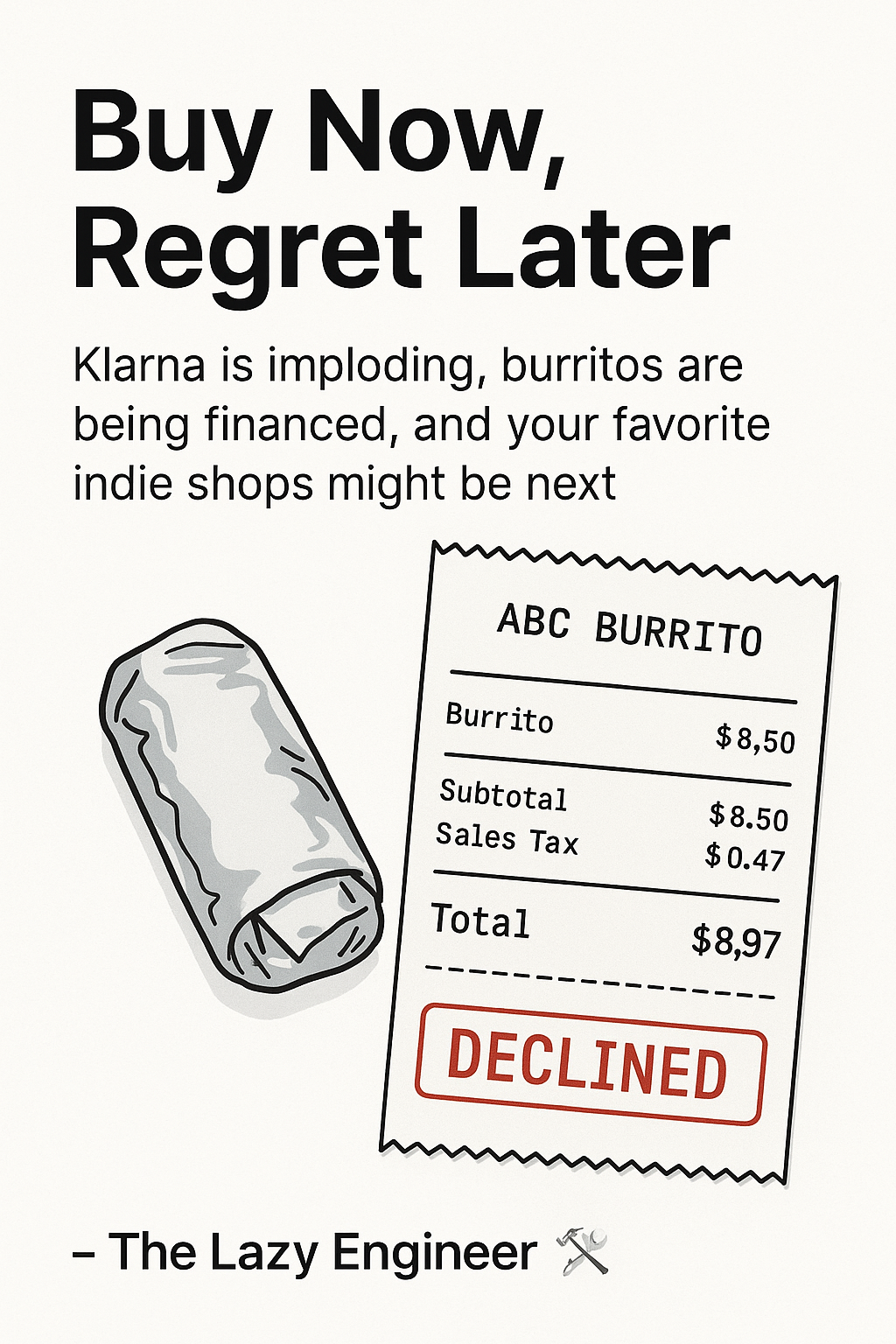
Buy Now, Regret Later: Klarna, Fast Fashion, and the Debt-Pilled Dev
I’ve worked in e-commerce long enough to know one thing:
“4 easy payments of $12” will convert more customers than free shipping ever could.
BNPL (Buy Now, Pay Later) has been the rocket fuel behind online stores for years. Klarna, Afterpay, Affirm — they turned hesitation into instant checkout gratification, and small businesses rode that dopamine wave straight to the bank.
Until now.
Wait—People Financed Lunch?
Yep.
You could finance your Qdoba order.
And Klarna would pay the vendor instantly, trusting that you’d repay your burrito debt in four neat payments across six weeks.
Spoiler: people aren’t.
And now, Klarna is trending for all the wrong reasons.
Why This Isn’t Just Funny
It’s hilarious, yes.
But it’s also:
- 🔥 A potential catastrophic failure point for small businesses
- 💳 A red flag for consumer stability
- 🧑💻 A warning to devs building “pay later” integrations into their apps
Here’s the cycle:
- Store installs Klarna → conversions go up.
- Klarna floats the money.
- Consumer defaults.
- Klarna eats it (until it can’t).
- Klarna collapses.
- Merchants lose their payout pipeline.
- Everyone acts surprised.
Why This Matters to Indie Devs
If you’re building:
- A storefront
- A headless checkout system
- A no-code shop template
- Or anything remotely related to selling…
You need to understand what happens when the magic payment button stops working.
My Advice (Unasked For but Free)
- ❌ Don’t treat BNPL like free money.
- 🔀 Offer a fallback processor.
- 🧱 Design your payment layer like it might disappear tomorrow—because it might.
- 📉 If 90% of your orders come from people financing socks or snacks, start asking deeper questions.
Final Thought
BNPL isn’t evil. But it’s fragile.
If your entire funnel depends on people not defaulting on tacos, maybe it’s time to rethink the funnel.
—
– The Lazy Engineer 🛠️